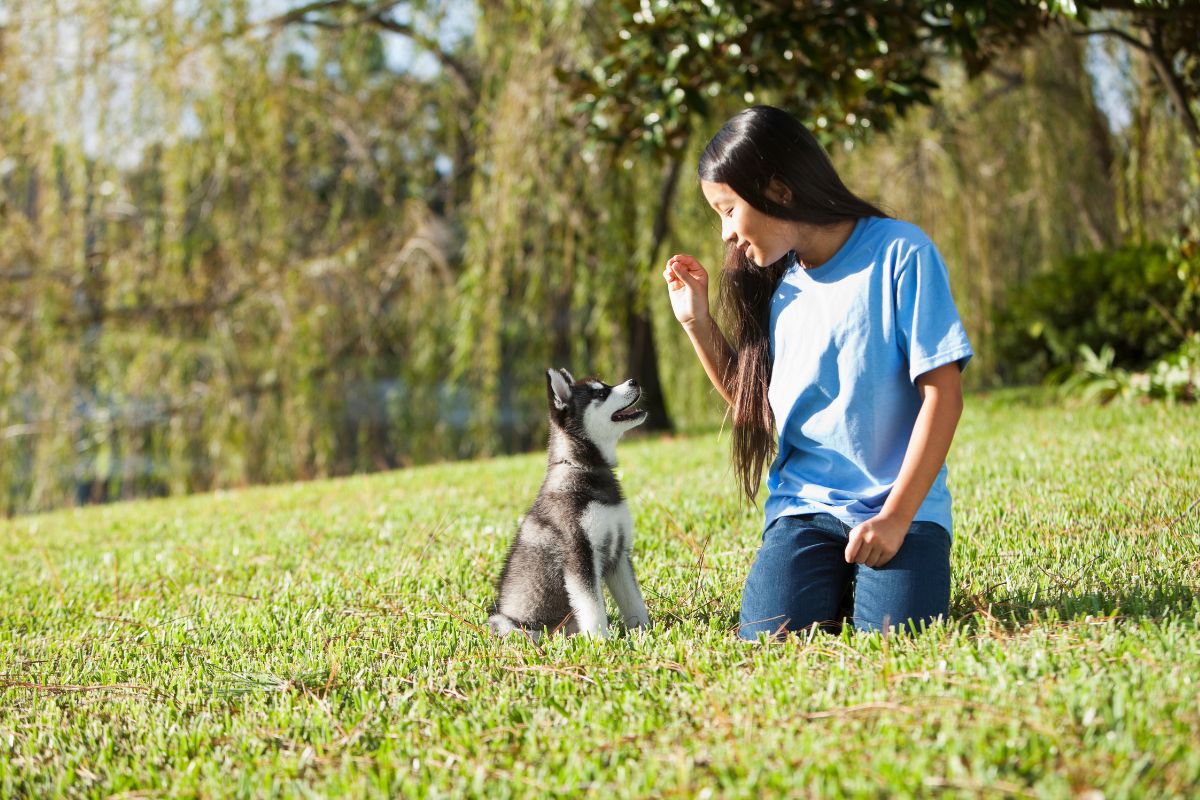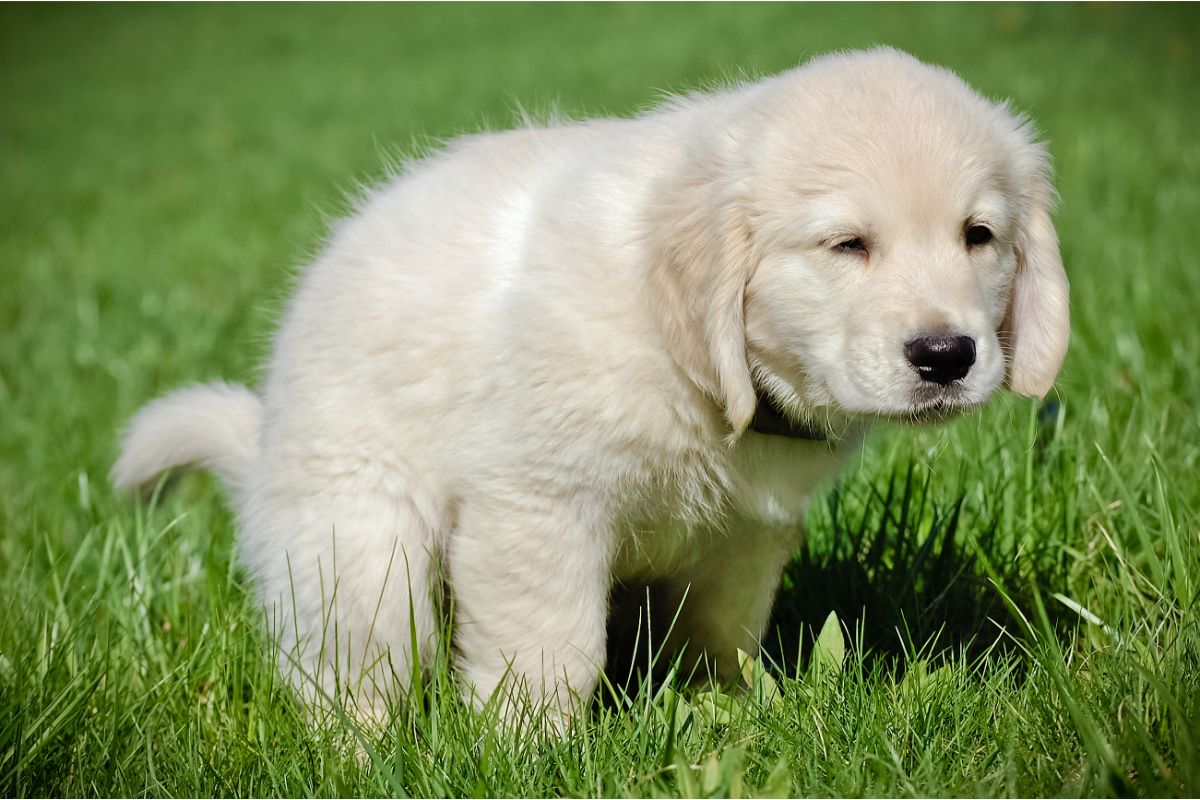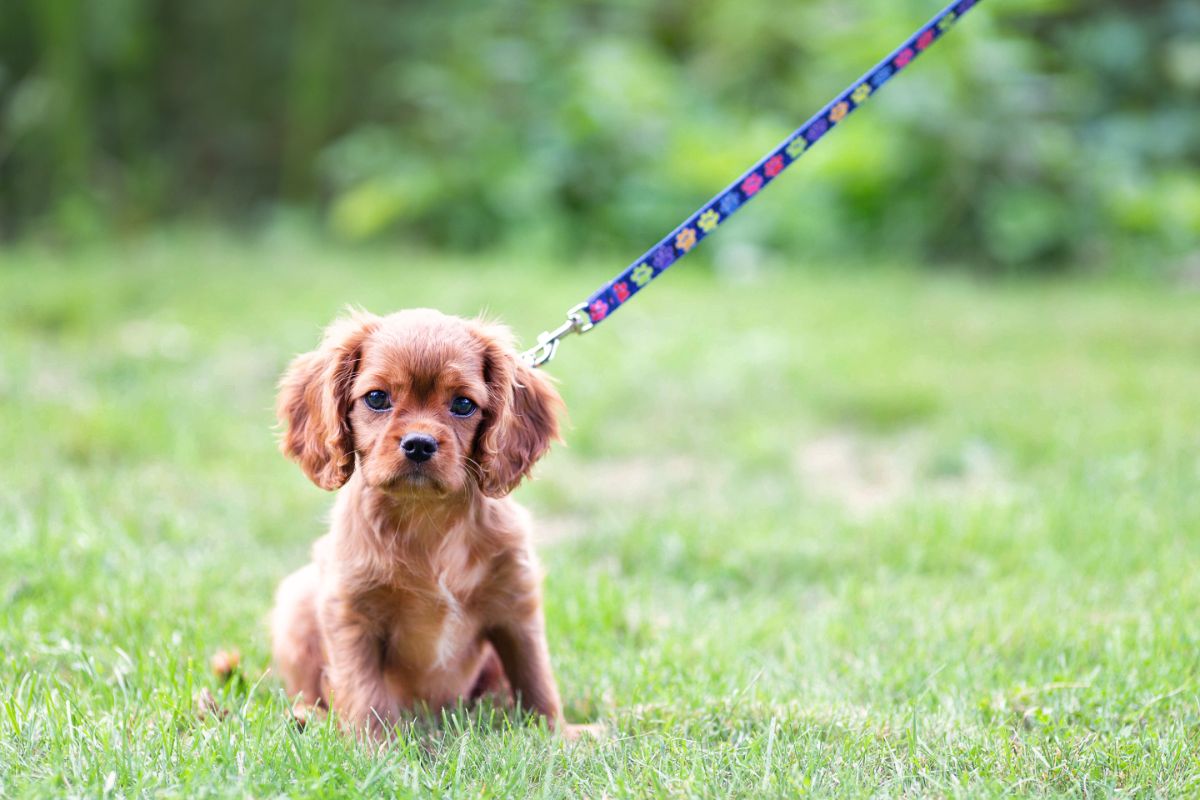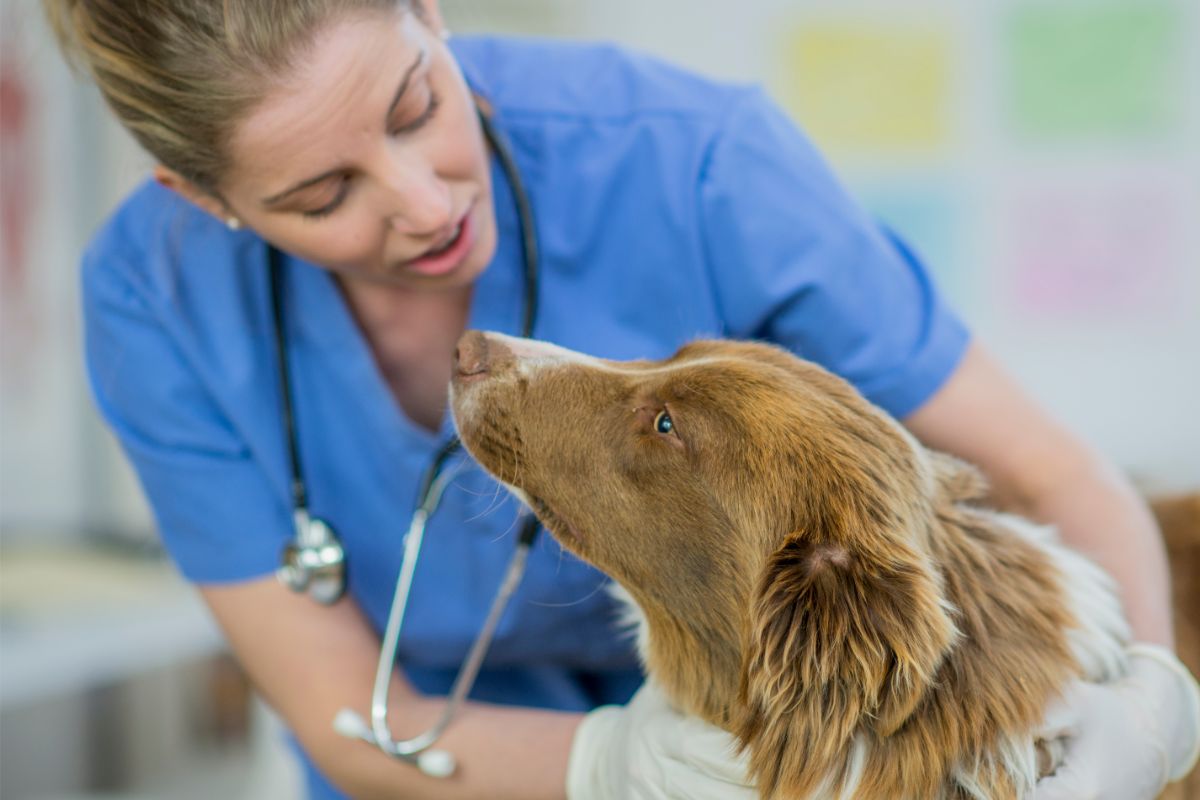It often makes sense to live in an inner-city apartment, especially if you are looking for fantastic social and job opportunities.
Living in the big city often means that you do not have a backyard – though you may have shared outdoor space.
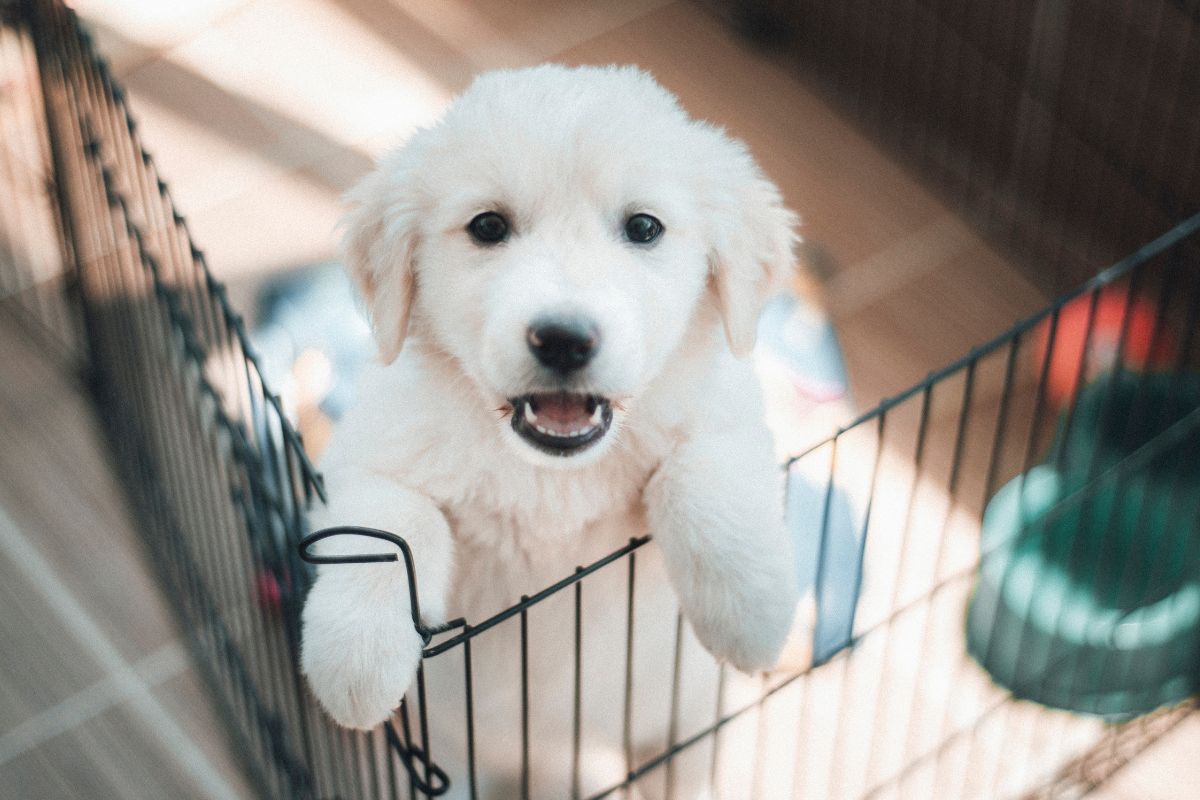
You might even find that there are not any local green spaces either, such as a park. Because of all this, you might be wondering how you can potty train your puppy.
Living in an apartment does not mean that you cannot have a puppy. It just means that you have to be inventive in how you train your puppy to do things like potty training.
If you are wondering how to potty train your puppy if you live in an apartment, then read on to find out more.
Can You Potty Train A Puppy Living In An Apartment?
Yes, you can potty train a puppy while living in an apartment, even if you have very little space to do so.
Once you get a puppy, one of the first things you will want to think about is how you are going to potty train your pup.
If your home has a fenced-off area that can be used for your puppy to potty train securely or a yard that has an area of grass, then it is much easier to potty train your puppy.
However, potty training can also be done while living in an apartment.
There are different challenges, for example how you can potty train and where you can potty train, but with the right tools and planning you will be able to successfully potty train your new pup.
What Are The Basics Of Potty Training A Puppy?
From the get-go, you will need to potty train your puppy.
This means learning how long they can wait until they can go to the toilet without having an accident, and the signs your puppy gives you to let you know they need the toilet.
So, let’s take a look at the basics of puppy training when you first get your puppy:
Crate Training
Using the crate training method is a great way to teach your puppy potty training.
It is often said it is a really important tool to use when potty training your puppy. This is because your puppy will find the crate warm and safe.
You will need to put your puppy into his safe space – which is his crate – when he cannot be supervised.
He will also be sleeping in the crate too. However, this does not mean that your pup stays in the crate 24/7.
The crate is where he will sleep and spend his time when you are not around, but otherwise, he will be out of the crate.
Begin by letting your puppy venture into the crate, but leave the door open. Soon enough he will find the space very comfy, and you can start shutting the door, especially at night.
Because his crate will be his safe space, he will learn to hold everything in and not want to soil the area.
This is a natural instinct of a dog and will teach him to hold it in rather than have an accident – unless you leave him for a very long time.
Knowing When Your Puppy Needs The Toilet
Another thing that you will need to learn is how your dog behaves when he needs to go to the toilet.
Having warning signs is a great way to know when he needs to relieve himself. However, not every dog will show you any warning signs.
Some of the warning signs include stopping the thing he is currently doing to run toward a door or the corner of a room, whining, or even sniffing areas like the floor.
No matter what, you will need to ensure that you take responsibility for making sure your puppy does not have accidents within the home.
Calculating Your Puppy’s Potty Breaks
There is a general rule to find out how long your puppy can wait in between his time of going to the toilet.
This can help you to understand when to take your puppy to the toilet, especially if he does not show you any warning signs.
Here is the math to find out how long your puppy can go between potty breaks:
Your puppy’s age and then divide it in half. This equals the time he can potentially wait to go to the toilet.
An example is a 4-year-old puppy should be taken to use the toilet every 2 hours. However, if they do show signs of needing the toilet between this, do not hesitate to let them go.
During the night a puppy will be able to hold in their business for much longer, so you will not need to get up from your bed every two hours to let them use the toilet. However, math can help you during potty training.
Also, it will ensure that your puppy is not waiting for ages in between potty breaks, which will stop accidents from happening.
How To Potty Train A Puppy Living In An Apartment?
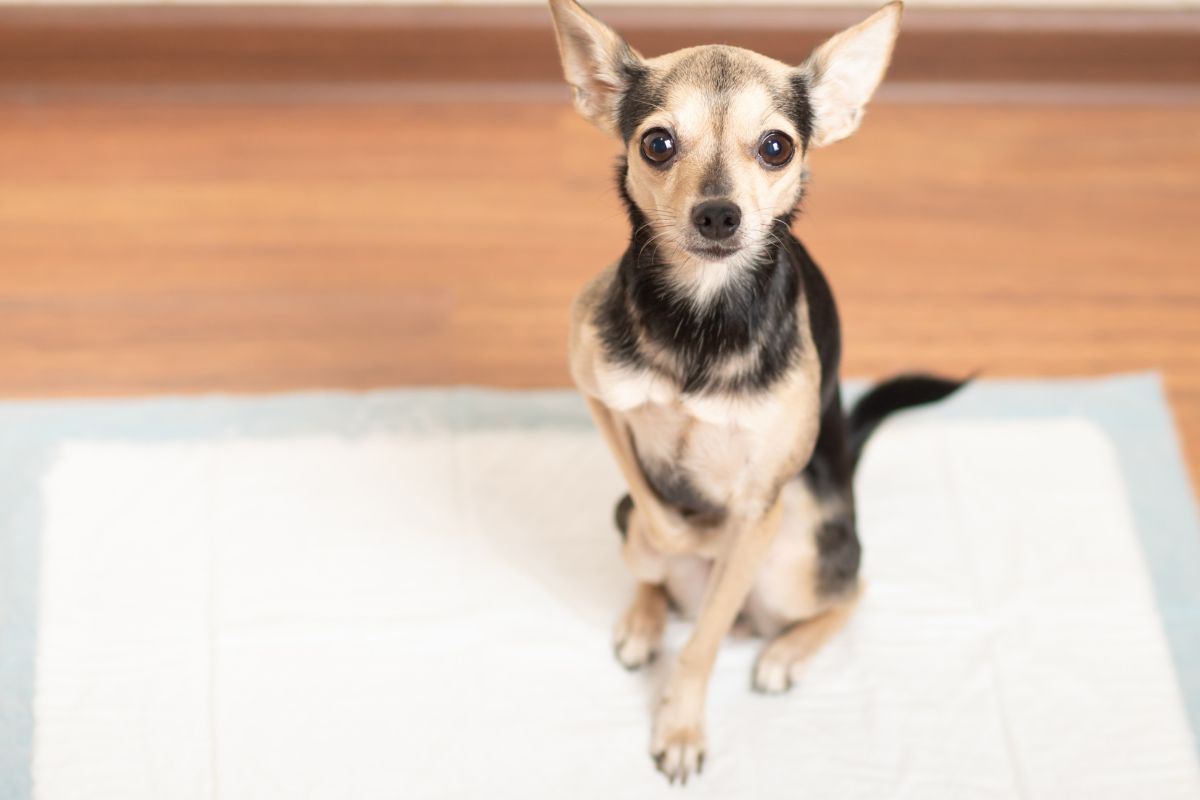
As we have stated earlier in this article, living in an apartment with very little outdoor space does not mean that you cannot own a puppy.
It just means that you have to be inventive when it comes to finding ways to potty train them – but also find ways for them to use the toilet in general.
If you need some inspiration, then keep on reading to find out how you can potty train a puppy living in an apartment.
Create A Potty Going Schedule
To be successful at potty training you will need to be consistent. This means going back to the calculation of your puppy’s age and halving it. This will determine how many hours are between the time you let them use the ‘potty’.
You will also need to schedule the potty training along with feeding time too, and when they wake up and go to sleep. If it is a younger puppy, then they are likely to eat three small meals a day – so keep all of this in mind.
Once you have the schedule down to a T, you will find that your dog is likely to have fewer accidents. He may also start to show you warning signs for when he needs the toilet too.
Use Grass Patches
Because a lot more people are now living in highrise apartments, there are plenty of ways to potty train your puppy in small spaces.
One of these ways is by using a small patch of grass, either synthetic material or real grass.
You can place a patch of grass on your balcony to allow your puppy to go to the toilet.
You can also use synthetic grass that has a container to catch it all in. You can then wash it and reuse it, meaning it will not start to smell over time!
The latter is also known as a puppy litter box. It can be convenient indoors too, and the absorbent material will cover up any smells during the day.
However, having real grass is often the best option due to it being closer to the natural material a dog will do its business on.
Invest In Potty Pads
Potty pads are perfect for those who have no outdoor space at all.
They can also be a convenient way to train your puppy to use the potty, and you can then transition your puppy to use an outdoor space later on.
The pads are very absorbent and lock away smells. This means that you will not have to deal with wet material in the home all day. However, you will want to change them!
Having them means that you can clean up your puppy’s mess very quickly and easily, without any fuss.
Also, just because you train your puppy to use puppy pads does not mean you cannot then train them to go outdoors to use the toilet.
Potty pads are also useful if you do tend to be away for a longer period of time than normal and do not want to leave your puppy in a crate.
You can put the puppy pads in a specific corner so your puppy can go to the toilet without having an accident.
Should You Punish Your Puppy For Having An Accident During Potty Training?
No, you should not punish your puppy for having accidents during potty training. Your puppy is still adapting to using the toilet, so it only makes sense that he will have a few accidents along the way.
While you may be annoyed that your puppy has gone for a wee where he shouldn’t have, always resist any urges to put their nose in the mess or shout at them.
This will only cause them to feel fear, which may result in behavioral problems in the future.
Instead, clean it up and carry on with the training. He is bound to mess up again, but over time he will learn to use the potty. He may also start to show you warning signs when he needs to go, too.
What Tools Should You Have Close By When Potty Training A Puppy?
Because accidents will happen during potty training, you will want to make sure that you have the tools to clear up the mess. For example, having poo bags to hand means that you can pick up any mess that happens.
You may also want a couple of old rags to hand too, as well as a pet-safe cleaner for the home. One thing you want to make sure that you do is to clean away any residue left by these accidents.
If you do not, then you are welcoming bacteria and terrible smells into the home.
You may also want to make it a habit to carry poo bags around with you whenever you have your puppy with you. You never know where he will have an accident!
Can You Use Bell Training To Potty Train A Puppy In An Apartment?
Yes, you can use bell training to potty train a puppy in an apartment. However, this only works if you have a door that leads to an outdoor space.
This can be something like a balcony where you then have a small patch of grass for them to relieve themselves.
The basics of bell training include holding a bell to their nose and letting them hit it, then opening the door. They will soon connect the bell to the opening of a door so they can use the potty.
Final Thoughts
Just because you live in an apartment does not mean that you cannot potty train your puppy effectively.
In fact, from using patches of grass to potty pads, there are various ways to ensure your puppy does not have an accident.
- How To Teach Your Puppy Their Name Easily! - July 18, 2023
- Is Your Puppy Counter Surfing? Find Out How To Stop It! - July 18, 2023
- How To Train Your Puppy For Car Rides: Everything You Need To Know - July 18, 2023





